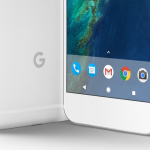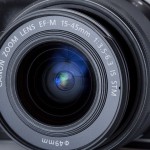
After a late-night reveal by Nintendo, the Nintendo Switch has been showcased in all its glory, boasting a hybrid design that’ll provide both console gaming and on-the-go gaming with a single console. Is Nintendo’s upcoming console something you should get excited about, or is it full of gimmicks? We went along to the Nintendo Switch UK Premiere in Hammersmith, London, to find out. Here’s our Nintendo Switch hands-on review.
PRICE WHEN REVIEWED
- £279 inc VAT
NINTENDO SWITCH HANDS-ON REVIEW
After a late-night reveal by Nintendo, the Nintendo Switch has been showcased in all its glory, boasting a hybrid design that’ll provide both console gaming and on-the-go gaming with a single console. Is Nintendo’s upcoming console something you should get excited about, or is it full of gimmicks? We went along to the Nintendo Switch UK premiere in Hammersmith, London, to find out. Here’s our Nintendo Switch hands-on review. Read next: Best games coming to Nintendo Switch
NINTENDO SWITCH REVIEW: UK PRICING AND RELEASE DATE
The Nintendo Switch will arrive on 3 March with a price of £279 and is available for pre-order now from the official store and retailers such as Amazon, Gamestop and GAME. It’s $299 in the US and although there seems to be a fair bit of negative reaction to the price, we don’t think it’s too bad – especially if you consider the console could potentially replace your DS.
Yes it’s more expensive than the PS4 but that’s not comparing launch prices. Nintendo could have gone for a budget price, some thought it would be £199, but we’re ok with it. If you can hold on, the price is likely to drop within a few months of the console going on sale.
For £279 you get the main console, the dock, a pair of Joy-Con controllers, a Joy-Con grip (to connect the controllers together), wrist straps, an HDMI cable and AC adapter.
What is a little bit disappointing is the price of accessories, because for starters an extra pair of Joy-Con controllers will set you back a whopping £74. One on its own is £43 and you’ll need to buy wrist straps at £4.99 each to avoid your TV getting smashing from an airborne accident. An extra grip for the Joy-Cons is £25.
If you fancy it, the Nintendo Switch Pro controller is priced at £64 and a spare dock to easily use the Switch with another TV or monitor is a whopping $89.

NINTENDO SWITCH REVIEW: DESIGN AND BUILD
The new Nintendo is like no other console we’ve seen before and is a little hard to describe in terms of design. That’s because the Switch has been designed so you can use it in various different ways, not just a box that plugs into your TV and stays put.
TV mode
The main part of the device is essentially a tablet so requires docking to turn into a console you play on the TV, hence the ‘TV mode’. Other modes are ‘Handheld’ and ‘Tabletop’ – see below. We used the Switch in console mode for a couple of games like Zelda and Splatoon and moving the tablet in and out of the dock is easy. You can even do it mid-game without pausing if you wish.
With the console docked you can use the Joy-Con controllers attached to the grip as a sort of make-shift traditional controller, or use one each for some multiplayer games.
Tabletop mode
Undock the Switch from the, er, dock and don’t attach the Joy-Con controllers and you’ve got Tabletop mode. Thanks to a kickstand on the back of the device, you can easily set it down on any flat surface and get gaming.
This is pretty cool and not something you can do with the PS4 or Xbox One. However, it is a little fiddly in the sense that you’re playing games on a relatively small 6.2in screen so you can’t sit too far away and play comfortably.

It’s also fiddly because the Joy-Con controllers are very small. Holding them sideways to play is awkward because of the size and the way the joystick and buttons are so close together. With one being Left and the other Right, you don’t get the same experience on each using them this way due to necessary button placement.
Handheld mode
The Nintendo Switch in handheld form is what makes the console so unique when compared to the likes of the PS4 and Xbox One. While Sony offers PS4 Remote Play via PC and Mac, and Microsoft offers something similar for the Xbox One, neither can offer a fully fledged portable gaming experience like Nintendo can. When combined with the two Joy-Con controllers, the Nintendo Switch is lightweight and surprisingly comfortable to hold. It resembles a thinner, more attractive Wii U GamePad with a 720p HD output, joysticks on either side along with the standard ABXY buttons and directional pad.

The edges of the Switch with Joy-Con controllers are curved, allowing for longer play times without any kind of discomfort – although we have our reservations about the layout of the Joy-Con controllers, which we’ll come to in more detail below. The gaming experience in handheld mode is impressive, as it offers the full game on-the-go without any real compromise apart from the downgrade in screen resolution and a finite battery life.
Joy-Con controllers
The Joy-Con controllers, despite having a rather silly name, are actually impressive – especially the built-in advanced HD rumble motor, which boasts similar levels of precision to Apple’s haptic engine.
This doesn’t only enhance standard gameplay vibrations, but opens a whole new kind of game: in one of the 1-2 Switch mini games we tried, you use the Joy-Con controllers to guess how many ball bearings are inside your virtual box by moving the controllers and feeling the balls ‘roll’ around. This would simply not work with a standard vibration motor, but the motor within the Joy-Con controllers tricked our brains into believing there were ball bearings rolling around inside, and we even managed to guess the right number.

However, the Joy-Con controllers do have their downside – the layout is a little awkward, especially when playing certain two-player games where each person has one Joy-Con controller each. As they’re used as left and right controllers for the main console, the analogue stick and buttons are in different places on each side. While one controller is fairly centred, the other features an awkwardly placed joystick and buttons, making long periods of two-player gameplay a little bit uncomfortable.
Joy-Con grip controller
As mentioned, one of the ways to use the Joy-Con controllers and will be the main way to play when the Switch is in console mode – especially if you don’t buy the Pro controller.
You sort of build it by sliding each Joy-Con controller onto the grip. This creates a traditional style controller that you hold with two hands but it’s quite an odd one. As you can see, it’s very square and although it’s more comfortable than we were expecting, the section in the middle could do with being wider so your hands are further apart.

Switch Pro controller & steering wheel accessory
The Nintendo Switch offers a few lesser-known types of controller at an extra cost: the Pro controller, and an accessory that’ll change your Joy-Con into a mini steering wheel for use with games like Mario Kart 8. The Pro controller looks similar to the standard controller provided with the Wii U, offering a gameplay experience similar to other consoles with four bumper buttons, two analogue sticks, ABXY buttons and a directional pad. What is unclear at this time is whether the controller will only be supported by certain games, or whether it’ll have universal game support.
The mini steering wheel for Mario Kart 8 Deluxe edition is much more impressive (sold separately). Simply pop the Joy-Con inside the wheel and it’ll provide you with a more natural driving experience. While the standard Wii U steering wheel was rather unwieldy and awkward to use, we found the new controller to be much more responsive and easy to use – in fact, it quickly became our preferred way to play Mario Kart during our time with the Switch.
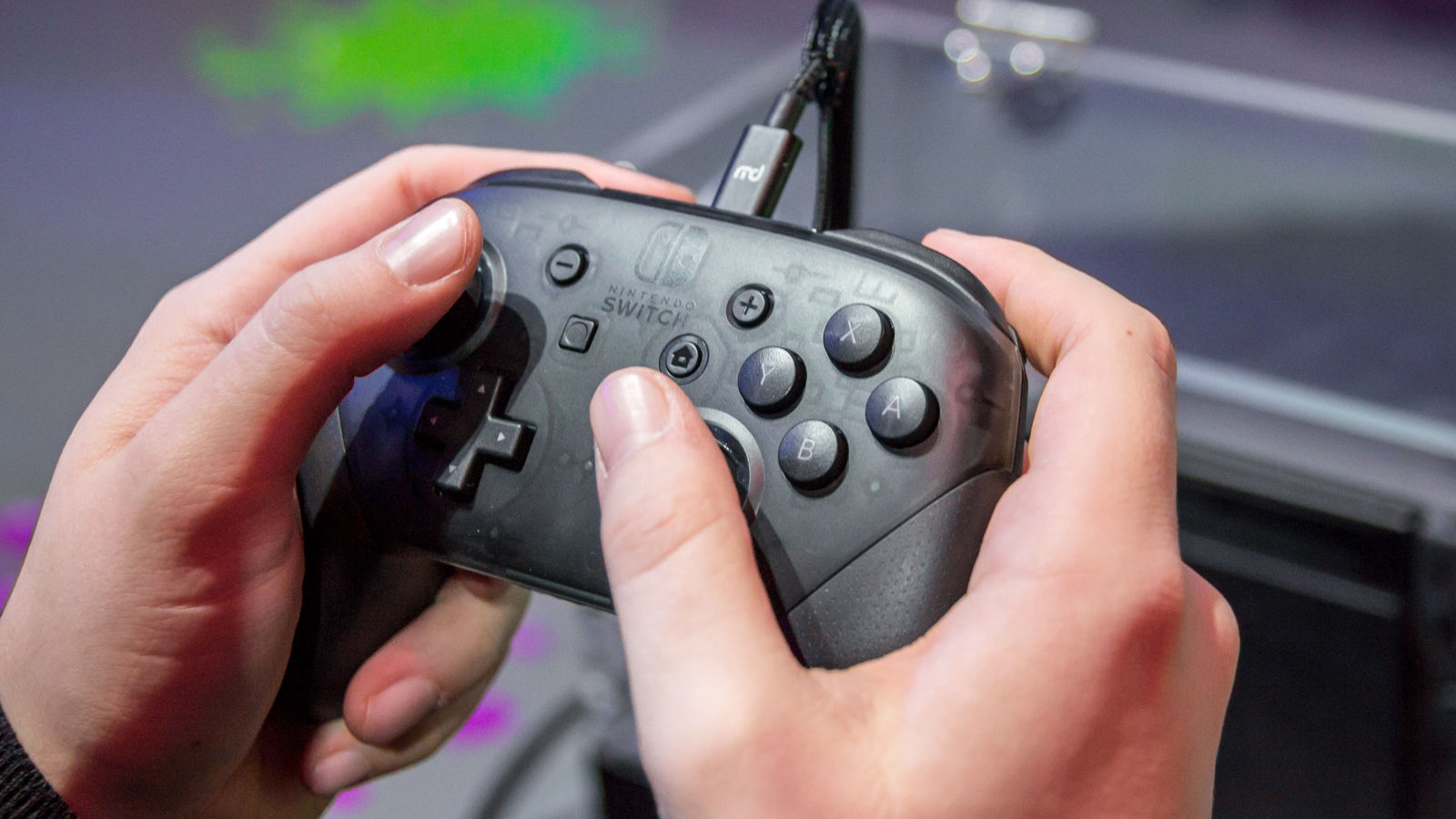
It’s worth bearing in mind that the new steering wheel is much smaller than the old one, meaning those with big hands might not be able to hold it with both hands like a normal steering wheel.
NINTENDO SWITCH REVIEW: FEATURES AND SPEC
While the design of the Nintendo Switch is no doubt impressive, what about the internals?
Display
Just how big is the screen featured on the Nintendo Switch? It measures in at 6.2in, making it smaller than many tablets on the market and only 0.3in bigger than Huawei’s Mate 9, a smartphone. It’s pretty small, there’s no getting around that – and that can have an effect on gameplay. While it’s a perfect size for using the Nintendo Switch in handheld mode with the Joy-Con controllers attached to either side, it’s not the greatest for two-player games in tabletop mode – especially with split screen.
We played Mario Kart 8 in desktop mode and while the overall gameplay experience was satisfactory, the screen was a little bit too small and there were times that we had to really squint to see what was going on. While you might say we were sat too far away, we were only 2-3ft away from the display – that should tell you everything you need to know about the size of the display.
It’s also a question of display quality, as the Nintendo Switch tablet display maxes out at 720p HD. While it doesn’t make a dramatic difference to the overall gameplay experience, you can notice soft textures in some games while you know it’d look crisp when played on a TV. And, c’mon, a 6.2in 720p display? That’s so 2012. On the other hand, the display is bright and vibrant, and for the first time in Nintendo history, offers a capacitive multi-touch screen. While there have been touch-enabled Nintendo devices before, they were reliant on pressure rather than touch, and were single-touch only.
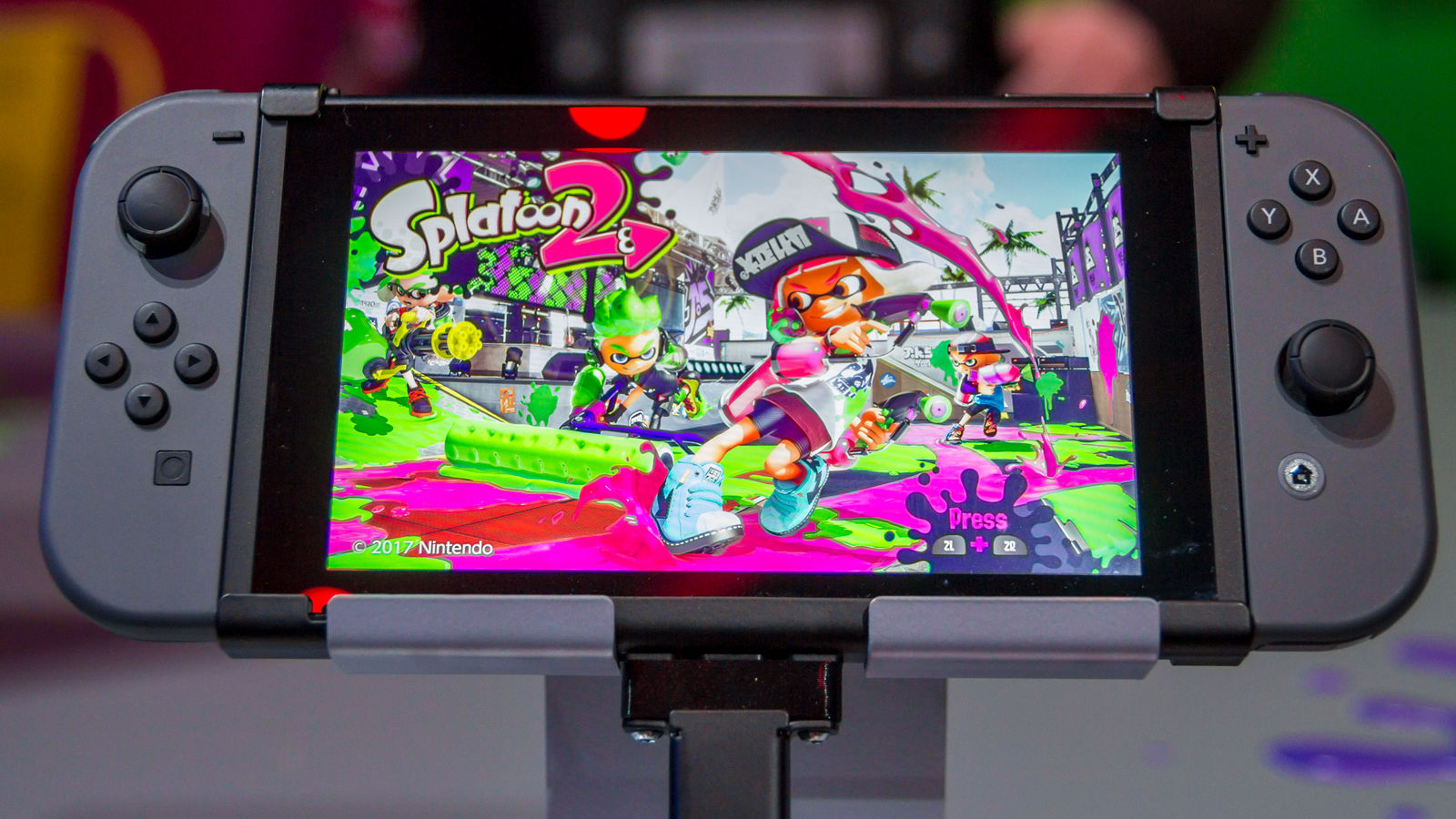
Internals and battery life
Inside the Nintendo Switch is a custom Nvidia processor which also includes a GPU based on the same architecture as the GeForce graphics cards. We don’t know details such as clock speed etc., but we experienced smooth performance with all the different games we played at the UK premiere with the console in the different modes. Some games didn’t look amazing or crashed but we believe that was down to non-final software.
This time around the Switch just comes in one model so there’s no deluxe option for more storage. Nintendo has gone for 32GB and you can expand it via the Micro-SD slot. The console dock outputs video to your TV via HDMI and the tablet section connects to the dock and charges via USB-C which is common on many smartphones.
Used on its own, Nintendo says the Switch can last for more than six hours in terms of battery life but it will depend on what you’re doing. We imagine that if you’re playing Zelda constantly it might not even reach half that figure but we’ll test this out when we get a sample.
Online multiplayer service
There will be an online network, much like PlayStation Plus or Xbox Live that Switch owners have access to, providing online gameplay along with voice chat, a monthly free game, deals and more. The good news is that the service will be available free of charge to all Nintendo Switch players from launch in March 2017. However, the free period will only last until Autumn 2017, when the paid service will launch and the free trial will end for all users.
GAMES
Games, as with any console, are extremely important to success. Does Nintendo have a wide enough range of games available at launch (or shortly after) to tempt consumers to fork out for the £279 console? We went hands on with a few of the Switch games available at the UK launch, and here’s what we thought.
Launch games, regions and backwards compatibility
Although we’re generally impressed with the hardware of the Nintendo Switch, any console is next to useless without games you want to play.
Sadly, the situation for Nintendo Switch launch games isn’t great. There are only four launch titles for the Switch and they are as follows: The Legend of Zelda: Breath of the Wild, 1-2-Switch, Skylanders Imaginators and Just Dance 2017.
While we’re excited for Zelda, this was initially supposed to be a Wii U game and is now the headline launch title for the Switch. The others aren’t overly exciting, especially as one is a set of mini games which will become tiresome very quickly.
There is some good news as Nintendo said “We’ve revised our approach: in general, we won’t apply region-locking to Nintendo Switch software” so it won’t matter where you buy games from.

Zelda: Breath of the Wild
So Zelda: Breath of the Wild is the main reason to get the Nintendo Switch and that’s a problem.
We played through the first 20 minutes of the game at the UK launch for the console and while it was a dazzling 20 minutes, the franchise simply doesn’t have the same broad appeal as a Mario title.
It’s going to be a great game, but for the gamers who want to get immersed in a huge single player world of adventure and puzzles. Let’s not forget that Nintendo’s recent success has come from accessible, fun games that anyone can pick up.
Splatoon 2
We also got a quick playthrough of Splatoon 2, a game headed to the Switch this summer, and while we had a lot of fun playing the local eight-player multiplayer, it wasn’t vastly different to the first game in the series from what we could see. The general gameplay looks similar, with the aim of the game being to cover the map in as much of your team’s paint as possible, while wiping out the other team in paint-based combat. It does boast a few new features though, including new guns and maps.

One feature we couldn’t get along with was controlling the aim via a combination of gyroscope and analogue sticks. The Nintendo Switch Pro controller we were using had a built-in gyroscope used for aiming up and down, while an analogue stick was used for general movement and rotation. It was supposed to make gameplay feel more intuitive, but we quickly became frustrated that we couldn’t play the game in the same way that we could in almost every other third-person shooter, stifling our overall enjoyment of the game somewhat.
ARMS
ARMS, another Nintendo Switch title coming out in 2017 looks to be an evolution of Wii Boxing, but with an interesting and exciting twist. Unlike with the original Wii game, users can’t constantly hit/spam your opponent with hits as Arms is much more tactical, and uses the Joy-Con controllers with its built-in sensors.
The aim of the game is to defeat your opponent via punches, throws and special attacks that are built-up throughout matches. The controls are what make the game so impressive – it’s incredibly simple and intuitive to play. All you need to do to punch is physically punch, and to throw a curved punch, simply throw a curved punch in real life. The tracking and response time was impressive, and the tactical element (along with mindless punching) makes Arms one of our favourite Nintendo Switch games so far.
Mario Kart 8 Deluxe edition
Mario Kart 8 is also coming to the Nintendo Switch in form of the Deluxe edition, although it won’t be a release title. The main difference between Mario Kart 8 for Wii U and the Deluxe edition for Switch? The Switch variant boasts not only new characters and tracks from other Nintendo Switch games, but also the ability to open two – yes, two – boxes at once during races. Insane. Apart from that, it’s business as usual!

As mentioned above, users can also use the Nintendo Switch’s official steering wheel accessory for a more immersive Mario Kart experience. We used the accessory during our time with the Switch and Mario Kart and we have to admit that the steering wheel quickly became our favourite way to play.
Super Mario Odyssey
We’re extremely pumped for the new Mario game on the Nintendo Switch. The trailer makes it look incredibly fun but the prospect of waiting around nine months for it to arrive following the launch of the console brings a wave a disappointment.
Nintendo really needs this game at launch and it doesn’t feel like too much to ask for with over four years to make it happen since the Wii U. We weren’t even able to play a demo of it.
1-2-Switch
1-2-Switch is one of the launch titles for the Switch and is a set of mini-games that show off the console, particularly the awesome HD Rumble feature of the Joy-Con controllers. Mini-games include gunslinging, cow milking and safe cracking – of the idea is that you face your rival rather than the screen.
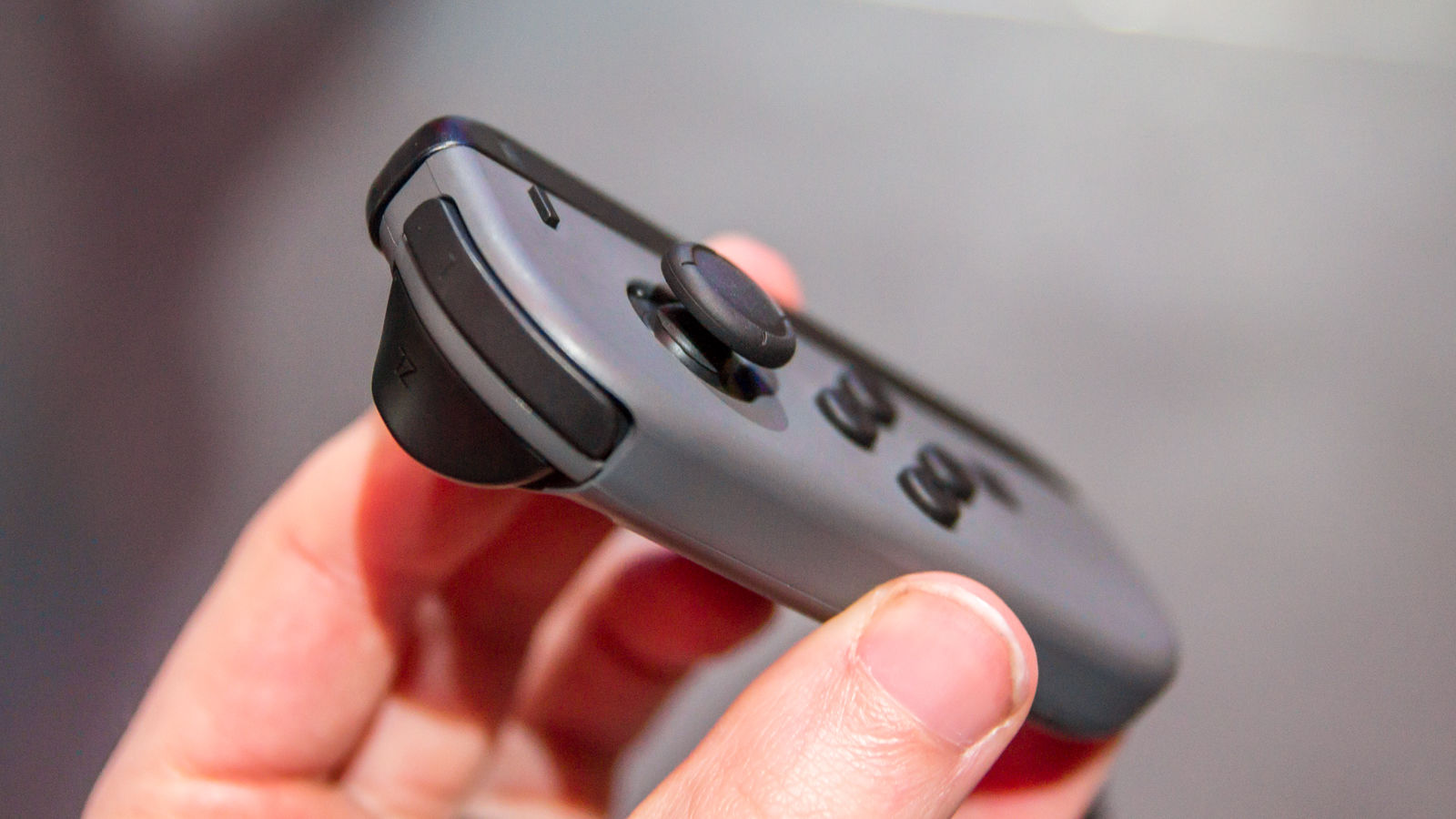
It’s no surprise that the games are fun and often hilariously funny (try milking a cow while looking into your opponent’s eyes and try not to laugh). However, they will quickly get old after a few plays which wouldn’t be so bad if the game was bundled with the console. Sadly, it’s a £40 standalone title.
Third-party games
Along with games developed by Nintendo, there will be a host of third-party games available for the console, although many will be released throughout 2017 and won’t be available at launch. Third-party games currently marketed for the Nintendo Switch include:
- Ultra Street Fighter 2: Final Challengers
- Sonic Mania
- Just Dance 2017
- Super Bomberman R
- Minecraft
- Skylanders Imaginators
- Fast RMX
- Steep
- I am Setsuna
- Syberia 3
- NBA 2K
- Dragon Ball Xenoverse 2
- The Elder Scrolls V: Skyrim
- Has-been Heroes

We’ll add more third-party titles as they become announced over the next few months.
SPECS
Nintendo Switch: Specs
- Nvidia custom Tegra processor
- Nvidia GPU
- 32GB storage
- Micro-SD card slot
- 6.2in 720 touchscreen
- USB-C port
- HDMI 1080p output
- Wi-Fi
- Around 6 hour battery life
OUR VERDICT
A lower price would help sell more units but we’re impressed with the hardware on offer with the Nintendo Switch. It might be limited to 720p on the tablet and 1080p to the TV but it’s extremely versatile and that’s a unique selling point. It’s really the games line-up we’re disappointed by as the main title, Zelda, is a game that was supposed to launch on Wii U and doesn’t have the appeal that Super Mario Odyssey will attract. It might be worth waiting to buy the Switch around Christmas when Mario arrives and the device could be cheaper but stay tuned for a full review soon.
Sourse: pcadvisor.co.uk





































